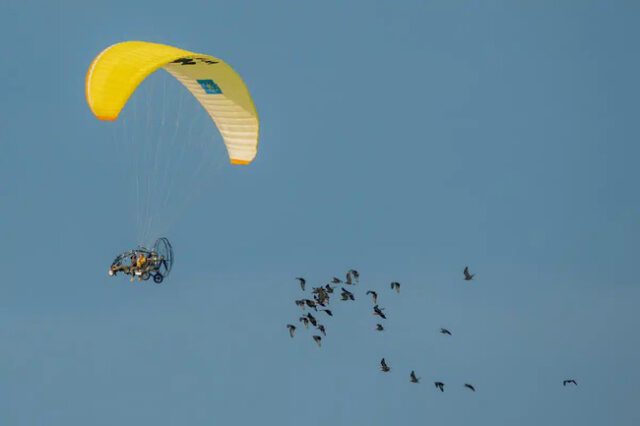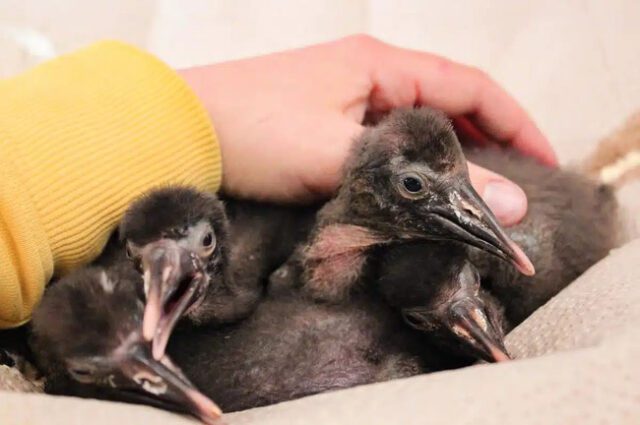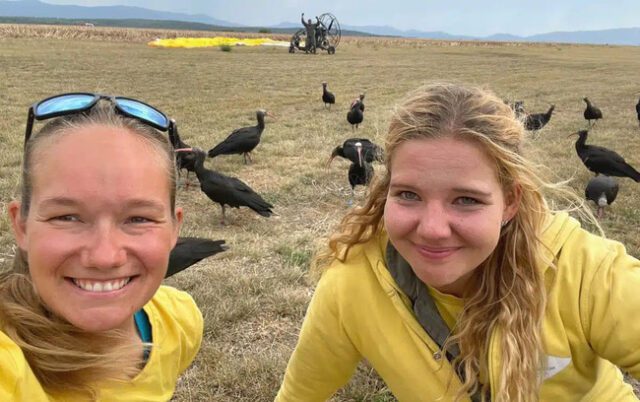
On September 5 in Shenzhen, China, a mesmerizing drone show set a new Guinness World Record for the largest number of drones flown simultaneously. An astounding 8,100 drones lit up the night sky for 18 minutes, captivating the audience at the Shenzhen University Sports Center. The drones moved in perfect synchronization, creating intricate light formations such as swirling patterns, hearts, and globes. The creativity and precision behind the display were awe-inspiring, demonstrating the immense planning and technical skill involved. This show marked a significant milestone in the evolution of light entertainment, as drone displays continue to push the boundaries of what can be achieved, offering a modern and eco-friendly alternative to traditional fireworks.

The record-breaking show was produced by HighGreat, a company renowned for its expertise in three-dimensional drone performances. Boasting a fleet of over 60,000 drones, HighGreat has become a global leader in the field, orchestrating thousands of drone displays in over 300 cities. Incredibly, the September 5 event was the second world record set by Shenzhen in just two days. The night before, on September 4, HighGreat achieved another Guinness World Record for creating the largest light image with 7,998 drones. These back-to-back achievements highlight the company’s innovation and commitment to transforming aerial entertainment through cutting-edge technology.

Ruston Jones and his cowboy father experienced a heartwarming encounter when they met two tourists from Taiwan who had never seen a horse in real life. While preparing their horses for a ride, the father-son duo noticed the tourists’ awe-struck reaction and offered them the chance to ride one of their horses. Continue reading “Cowboy Father and Son Offer Horse Rides to Two Tourists Who Had Never Seen These Animals in Real Life” »

Earth is about to gain a temporary companion in the form of a “mini-moon,” as a small asteroid, 2024 PT5, is set to orbit our planet for nearly two months. This asteroid, just 33 feet (10 meters) wide, was discovered by the Asteroid Terrestrial-Impact Last Alert System (ATLAS) in August and is believed to have originated from the Arjuna asteroid belt. Starting September 29, 2024, PT5 will orbit Earth until November 25 before breaking free from our planet’s gravitational pull. While Earth’s Moon has been a constant presence for billions of years, these temporary captures of small celestial bodies are rare, though not unprecedented.

In 2022, a similar event occurred when an object named 2022 NX 1 briefly orbited Earth before escaping. Asteroids like 2024 PT5, which come from the Near-Earth object (NEO) population, can sometimes be captured by Earth’s gravity and become mini-moons. These mini-moons are difficult for amateur astronomers to spot due to their small size and dimness. 2024 PT5 requires a powerful telescope with at least a 30-inch diameter and a CCD or CMOS detector for clear observation. Once 2024 PT5 leaves Earth’s orbit, it will return to the Arjuna belt, but astronomers believe it could make a return visit in 2025 and 2055, continuing its cycle around the Sun.


A two-foot-tall bronze statue of the Greek goddess Diana, which once adorned the fireplace mantle of the Titanic, has been rediscovered on the ocean floor, over a century after the ship’s tragic sinking. The statue, known as the Diana of Versailles, is a replica of an original piece housed in the Louvre, and was part of the ship’s luxurious décor, emphasizing its role as a “floating gallery of fine art and design.” The statue was recently found by the Georgia-based Continue reading “Long-Lost Diana of Versailles Statue Sank with the Titanic–But Was Just Found on the Ocean Floor” »

Scientists in Austria are embarking on an extraordinary mission to help nearly extinct northern bald ibises learn to migrate. In August 2024, conservationists from the Waldrappteam began guiding 36 hand-raised northern bald ibises from Austria to Spain, a journey spanning 1,740 miles over up to 50 days. This marks the 17th time the team has undertaken such an endeavor. The scientists, flying in ultralight aircraft, play a crucial role in guiding the birds, with two foster parents, Helena Wehner and Barbara Steininger, leading the way. Their unique bond with the ibises is evident as they call to the birds midair, guiding them along their path. Helena Wehner notes the deep connection she feels with the birds, likening the experience of flying with them to entering another world, where the birds acknowledge their human guides with subtle gestures mid-flight.

The northern bald ibis, once widespread across Europe and North Africa, has been nearly extinct in central Europe for centuries. Through the efforts of the Waldrappteam, the species has been downgraded from critically endangered to endangered. However, challenges remain. Without migratory knowledge from wild ancestors, the birds rely on humans to guide their migration. Inspired by the pioneering work of “Father Goose” Bill Lishman, the team, led by biologist Johannes Fritz, has been teaching the ibises to migrate for years. Despite the occasional setbacks, such as wayward birds and shifting migratory schedules due to climate change, these missions offer a hopeful future for the species. By adapting to environmental changes and continuing to innovate, conservationists are helping to preserve not only the northern bald ibis but also other species threatened by climate change.



In the Philippines, students have found a creative way to reduce the stress of exams and prevent cheating by designing and wearing funny “anti-cheating hats.” Schools like Bicol University College of Engineering and Batangas State University – Lobo Campus have embraced this practice, asking students to craft headgear that limits their ability to see others’ papers during exams. While the hats were originally intended to be simple, students have gone above and beyond, creating elaborate and humorous designs that reflect their personalities. Professor Mary Joy Mandane Ortiz expressed her delight at the students’ creativity, noting how these hats transformed a stressful experience into something more enjoyable, fostering a positive atmosphere during exams.

Similarly, Professor Angelo Ebora encouraged his students to design anti-cheating hats with an agricultural theme, leading to various inventive creations. Some students kept it simple, using cardboard boxes, while others crafted intricate designs, such as a Chainsaw Man mask or a crocheted hat. Ebora shared images of his students’ work online, praising their enthusiasm and the effort they put into the project. He was particularly impressed by how seriously the students took the task, which added a fun and lighthearted element to the exam process, helping to ease the pressure and anxiety that often accompany tests.



Homeowners are increasingly getting paid to contribute their rooftop solar panels, battery storage, and electric vehicles (EVs) to “virtual power plants” (VPPs), which help support stressed energy grids. These VPPs aggregate renewable energy resources from homes in states like California, Vermont, Texas, and Utah to meet high electricity demand during extreme weather events, such as heatwaves. By doing this, VPPs lower costs and reduce the reliance on fossil fuel “peaker” plants, which are typically activated during emergencies. Homeowners can earn from a few hundred dollars to as much as $10,500 per year, depending on the specific program, for sharing their stored energy with the grid. For example, GoodLeap, a company financing sustainable home energy systems, launched a VPP program in California, offering customers up to $350 annually, while aggregating 200 home batteries to assist the grid during times of peak stress.

This growing trend is driven by the increasing adoption of home solar panels, battery storage systems, and EV chargers, which are becoming crucial for preventing power outages as electricity demand rises. Programs like these help offset the cost of maintaining traditional gas power plants, while also helping states meet their renewable energy goals. Experts predict that VPPs could help meet up to 20% of the projected 200 gigawatts of peak electricity demand in the U.S. by 2030, potentially saving $10 billion in grid costs each year. Companies like Sunrun, a leader in the VPP space, have already signed up thousands of customers and are demonstrating how VPPs can rival the capacity of traditional gas plants, further pushing the energy industry towards cleaner, more resilient solutions.

Michelle Owen, a sports presenter, captured a touching moment when her son Zac set off for his first day of school. Rather than a typical first-day-of-school photo, Owen shared an image that radiated creativity and heartwarming sentiment. In the picture, Zac walks out the door in his school uniform, but it’s his action figures—Hulk, Spiderman, Thor, and others—who take the spotlight. Lined with their arms raised, the toys appear to be waving him off on his new adventure, a playful nod to the famous Toy Story farewell scenes. The thoughtful setup, complete with a small board marking the occasion, resonated with many after Owen posted it on Instagram, where it quickly went viral. Her caption, “Our little superhero has started school,” summed up the sweet and symbolic nature of the milestone. Continue reading “Mom Shares Heartwarming Photo of Son’s Action Figures Waving Him Off to First Day of School” »

The Cosmos tiny home, designed by Plume, cleverly addresses the challenge of limited space typical of French tiny houses, which are constrained by the country’s strict towing laws. Measuring just 20 feet in length and built on a double-axle trailer, the home maximizes its compact footprint through smart design elements. The exterior is clad in thermally treated poplar and topped with a durable aluminum roof. Upon entering through a glass Continue reading “The Cosmos Tiny Home Features a Cozy Netted Upstairs Area for Reading & Chilling” »

































